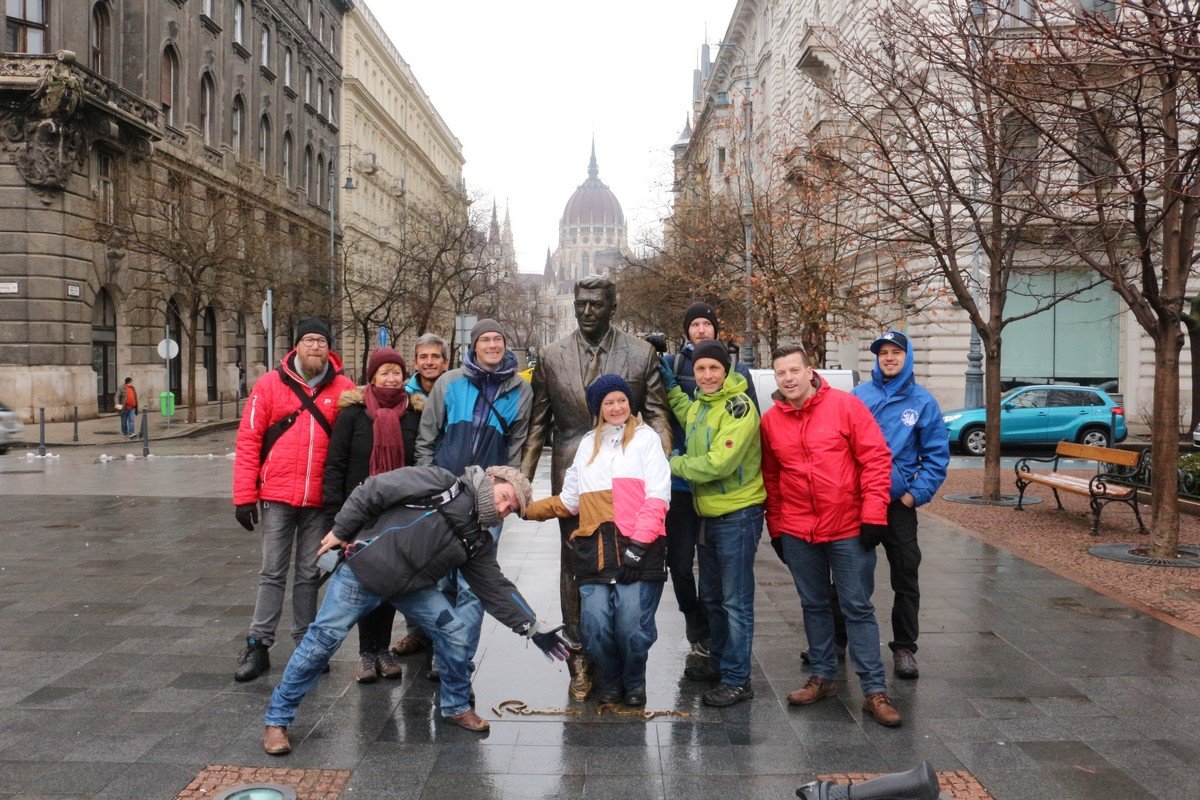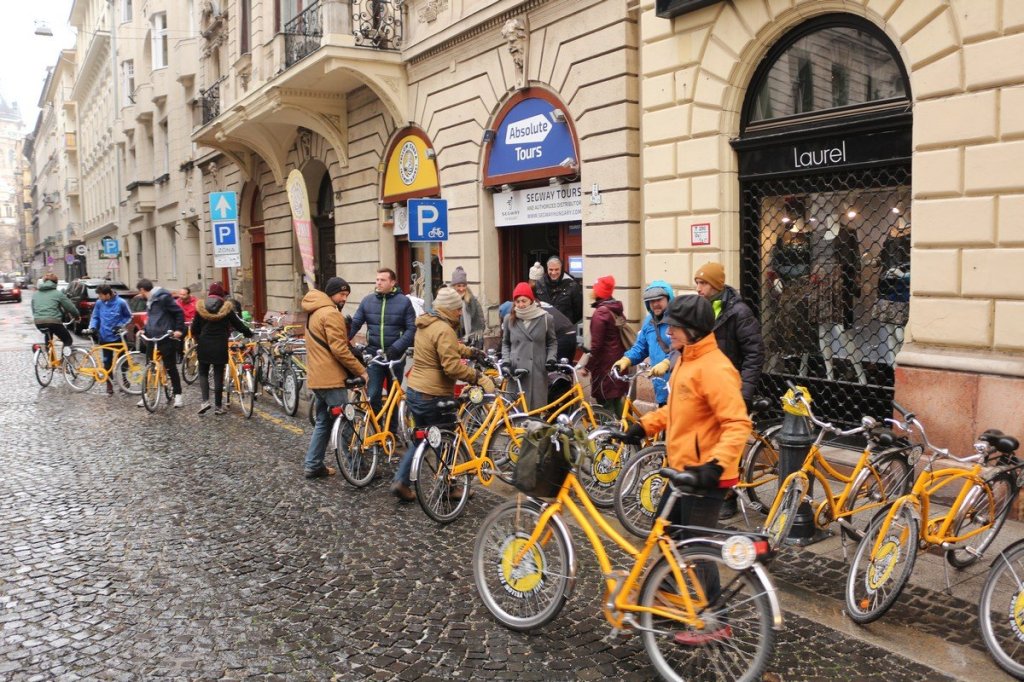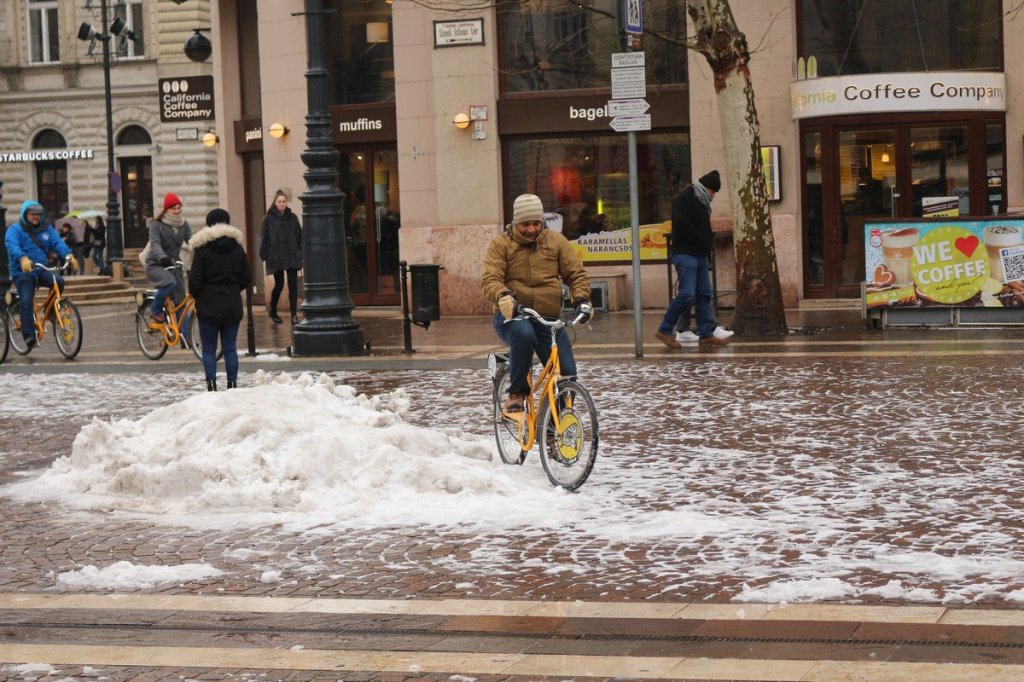A Winter Bike Tour through Budapest

Cycling with a Yellow Zebra
As you might guess we not only love cycling in our hometown Berlin but anywhere really. The annual Cycle Cities symposium brought us to beautiful Budapest this time. Cycle Cities is a network of fellow bike tour operators from all over Europe, the US and Australia, who meet every year to get to know each other and exchange knowledge and experiences to create the best bike tours in the world. I joined the symposium for the first time and met people from 20 (!) cities, which was lots of fun mostly because these bike-crazy people are such a friendly bunch.

Part of our program was, of course, a bike tour through Budapest, organized by our generous hosts from Yellow Zebra Budapest. Their home base is in a shop behind the Hungarian State Opera. Apart from storing their bikes and welcoming their guests there, they also sell second-hand books in English on a gallery upstairs which gives the place a very cozy vibe.
Temperatures in Budapest were not too friendly around 0° C, so our hosts asked us if we wanted go on a walking tour instead. Even if we wanted to, that was of course not an option, if we are not weather-proof, who will be? So, after grabbing one of their yellow bikes we set off in 3 groups to explore the city.

Perfect conditions for a bike tour
To my surprise our guide Bogata immediately went onto the side walk, which doesn’t seem to be a problem in Budapest. Although streets are usually too narrow for cycle paths in the Jewish quarter where we stayed, bigger streets have one more often. After a brief stop at the opera house, we took a cycle path going down Andrassy boulevard, the city’s main avenue, cycling past grand mansions from the 19th century and designer shops. Think Unter den Linden just grander and prettier. Right from the start you can see and feel that this city was once part of a great empire. The Habsburg dynasty ruled the Austro-Hungarian empire from Vienna with Budapest as its co-capital until 1917.
Our first stop leads us to St. Stephen’s basilica, Budapest’s biggest church, named after Hungary’s first king. According to our guide, buildings are not allowed to be higher than the basilica in the city. This includes the parliament building which is of equal height to symbolize that neither church nor state rule over one another.

